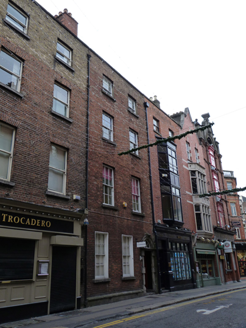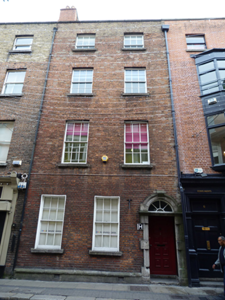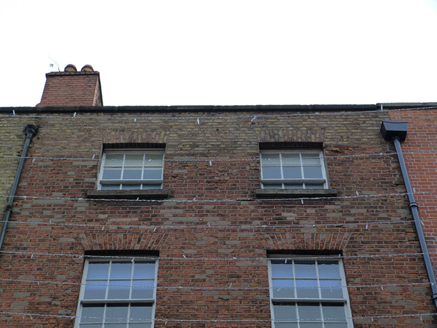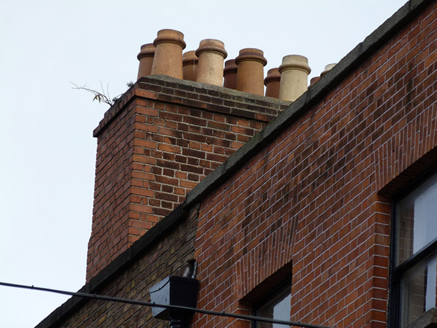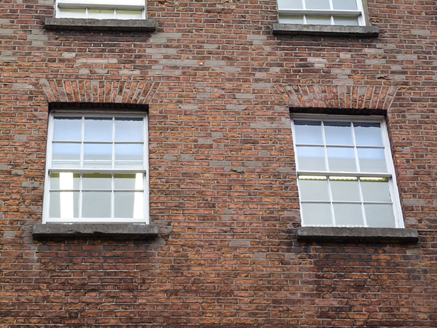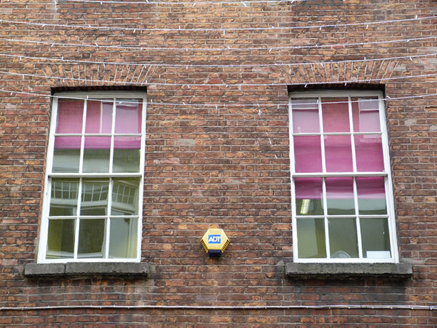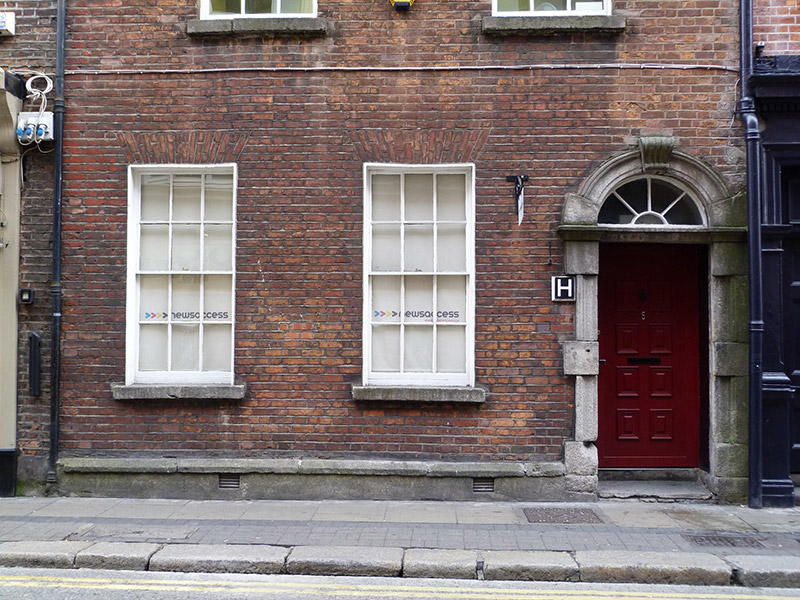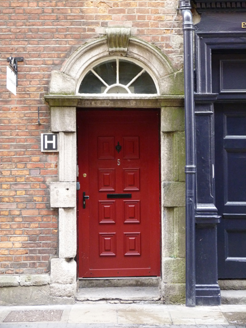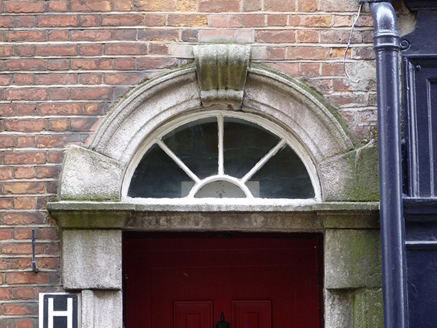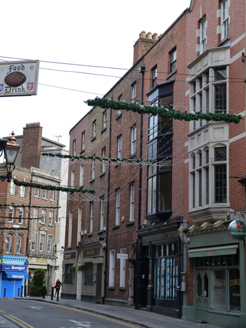Survey Data
Reg No
50910152
Rating
Regional
Categories of Special Interest
Architectural, Artistic
Original Use
House
In Use As
Office
Date
1740 - 1780
Coordinates
315820, 233944
Date Recorded
14/10/2015
Date Updated
--/--/--
Description
Terraced two-bay four-storey former house over concealed basement, built c. 1760, one of three similar former houses. Now in use as offices. M-profile pitched roof, front span hipped to south end, hidden behind refaced brick parapet having brick chimneystacks with yellow clay pots, and with cast-iron rainwater goods to north end and replacement uPVC rainwater goods to south end. Red brick walls, laid in Flemish bond, over granite and rendered plinth course, top part of facade rebuilt in yellow brick. Square-headed window openings with granite sills, raised rendered reveals to ground floor, and timber sliding sash windows, three-over-three pane to top floor and six-over-six pane elsewhere. Round-headed door opening with carved stone block-and-start surround, moulded stone cornice, scrolled granite keystone, spoked fanlight, and replacement panelled timber door with low step.
Appraisal
A significant mid-eighteenth-century former townhouse, opening directly onto the street, with a fine Gibbsian door surround and spoked fanlight. Part of a terrace, located on the east side of St. Andrew Street, it contributes significantly to the architectural heritage and character of the area. The south end of St. Andrew Street was originally called Hog Hill and was laid out on land granted to Thomas Pemberton in 1643. While much of the street was rebuilt in the late nineteenth and early twentieth centuries, some early buildings, such as this one, remain.
